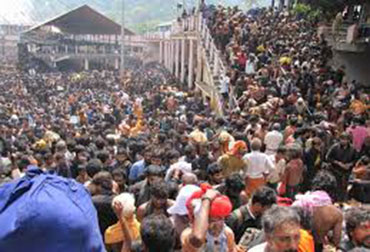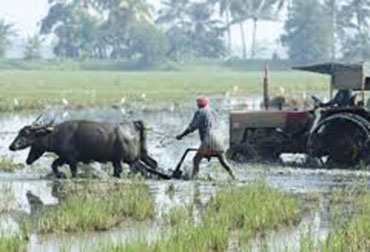

Developmental Initiatives In Kuttanad And Their Impacts On The Ecosystem
Developmental Initiatives In Kuttanad And Their Impacts On The Ecosystem
A multi-dimensional study
Principal Investigator
Dr. Kesavan Rajasekharan Nayar PhD
Co-investigators
1. Dr D Nandakumar. Ph.D, Honorary Senior Fellow, Santhigiri Social Research Institute, Pothencode, Thiruvananthapuram
2. Dr Jacob Kuruvilla MPH, Fellow Santhigiri Social Research Institute, Pothencode, Thiruvananthapuram
3. Dr Chitra Grace, PhD, Associate Professor, Global Institute of Public Health,Chacka Bypass, Thiruvananthapuram
Background
Well-being of the communities living in proximity to wetlands across the world are dependent on environmental health in general and the ecosystem services provided by the wetlands in particular, for their livelihoods. There is a complicated relationship between physical, biological and cultural resources in Kuttanad. However, Kuttanad has become an environmentally fragile zone largely due to human interventions in the ecosystem.
Review
Intensive use of pesticides and fertilizers for the High Yield Varieties (HYV) of seeds used for rice cultivation has added to the problem. Even in the eighties, more than 46 different formulations of pesticides amounting to about 1000 tonnes were used in Kuttanad in every crop season. (Thampattiet al, 1999; Sreejith, 2013) The concentrations of the pesticides such as Lindane, DDT and Endosulfan and fertilizers such as Pottassium, Nitrogen, Phosphate etc. peak during December-February and July-August coinciding with the crop seasons. The exact nature of impacts of this has not been studied and therefore the impacts documented in many reports need to be grounded and with an evidence-base.
Rationale
While it is heartening to see that there are huge volumes of literature on Environmental Health and Livelihoods in wetland ecosystems, there are insufficient studies on health impact of use of pesticides in the local population through environmental effects.
Objectives
The proposed study is a multi-disciplinary effort to understand the impact of Kuttanad development on the human population with respect to land- use pattern, health and livelihood, with the objectives to understand the impact of pesticide use in soil, water and health of the people in Kuttanadu, to assess the temporal changes in the land use patterns using Remote Sensing data which have implications for health and livelihood, to identify vulnerable zones using GIS and develop thematic map, to evolve an environmental health profile of Kuttanad and to develop a sustainable environmental health assessment and monitoring tool for the community. Based on the above, to evolve the framework for an environmental health technology mission for the region.
Methodology Mixed methods will be used and includes household survey, water and soil sample testing, estimation of blood valuesof heavy metals and pesticide residues, GIS mapping, developing and testing a community tool for environmental health assessment.
Relevance vis-à-vis state needs
There is a complicated relationship between physical, biological and cultural resources in Kuttanad. Historical misunderstandings and a lack of appreciation for the rich water resources of estuaries and canals of Kuttanad have led to their widespread draining and development. Kuttanad has highly fragmented land ownerships, haphazard development plans and a lack of knowledge about human impacts. The long history of building bunds (dykes), regulated draining of water (thanneermukkom and thottappally spillway), and depletion of oxygen in the water cause massive fish kills, reduces fish and shellfish populations, and deteriorate water quality leading to negative impacts on human health.
For more details, please write to krnayar@gmail.com
Bibliography
- Abraham, John. (1980). “Kuttanad” (in Malayalam), Kerala SastraSahityaParishat, Trivandrum, India
- Ajith Kumar. Kuttanadu: a case in point. Down to earth. Available at http://www.downtoearth.org.in/node/27265
- Alexander, T., Nair, P.K.K. and Shaji, P.K. (2010). Environmental perspective of kuttanad wetland with special reference to kainakaripanchayat Journal of Basic and Applied Biology, 4 (3): 60-68
- Busby, J. R. (2002).Biodiversity mapping and monitoring. SKIDMORE A. Environmental Modelling with GIS and Remote Sensing, 165.
- Chandy, Jacob. (2014). "Economics and environmental dimensions of backwater resources in Kerala A study with special reference to Kuttanad region.".
- Department for International Development. (2001). Biodiversity—A crucial issue for the world’s poorest. London: DFID.
- Downward, R., Endter-Wada, J., & Kettenring, K. (2014). Adaptive wetland management in an uncertain and changing arid environment.Ecology & Society, 19(2).
- ENVIS. 2014. http://www.kerenvis.nic.in/Database/GENERAL_822.aspx (updated on18/07/2014)
- Ghai, D., & Vivian, J. M. (2014). Grassroots environmental action: people's participation in sustainable development. Routledge.
- Indo-Dutch Mission (1989).Kuttanad water balance study - A report.Government of Kerala, Trivandrum, Kerala, 70pp.
- Liu, J. and Taylor, W. W. (eds). (2002) Integrating Landscape Ecology into Natural Resource Management. Cambridge University Press: Cambridge, MA, USA.
- McDermid, G. J., Franklin, S. E. and LeDrew, E. F. (2005) Remote sensing for large-area habitat mapping. Progress in Physical Geography 29, 449–474.
- Narayanan, S.P., Thomas, A.P. and Sreekumar, B. (2011). Ornithofauna and its conservation in the Kuttanad wetlands, southern portion of Vembanad-KoleRamsar site, India. Journal of Threatened Taxa, 3(4): 1663–1676.
- NCSCM. 2014. http://ncscm.org
- Nayar, K R. 1998. Sustainable Development: Conceptual Issues and Linkages with Environment and Health. In ManasChatterji, Mohan Munasinghe and Rabin Ganguly (eds.). Environment and Health in Developing Countries.New Delhi: APH Publishing Corporation, pp.81-86.
- Shari, P.V. and Chithra, K.P. (2005). History and geography of Kuttanad, pp. 9–18. In: Joseph, M.J. (ed.). Water reclaiming in Kuttanad; Possible chances.Planet Kerala, Trivandrum, 131pp. (In Malayalam).
- Sreejith K A. (2013).“Human impact on kuttanad wetland ecosystem - an overview”.International Journal of Science, Environment and Technology, Vol. 2, No 4, 679 – 690.
- Swaminathan M S., (2007). Measures to Mitigate Agrarian Distress in Alappuzha and Kuttanad Wetland Ecosystem, M.S.Swaminathan Research Foundation, Chennai, India.
- Sylas VP, John CM, Joby P, Unni, KS, Satheesh R, Thomas AP, (2008). Diversity and biomass production of aquatic plants of Kuttanad wetland ecosystem, Kerala.Book of Abstracts.International Conference on Biodiversity Conservation and Management Rajiv Gandhi Chair in Contemporary Studies, 36-37.
- Thampatti, KCM and Padmakumar, KG (1999). Rice Bowl in Tur moil: The Kuttanad Wetland Ecosystem, Resonance, March.
- Vidya, V., K. Sumathy, and G. Prasad. (2014). "The Effect of Sea Food Processing Discharge on the Nearby Wetlands in Cherthala-Aroor-Edakochi Coastal Belt of Kerala, India." Nature Environment & Pollution Technology 13.2.


